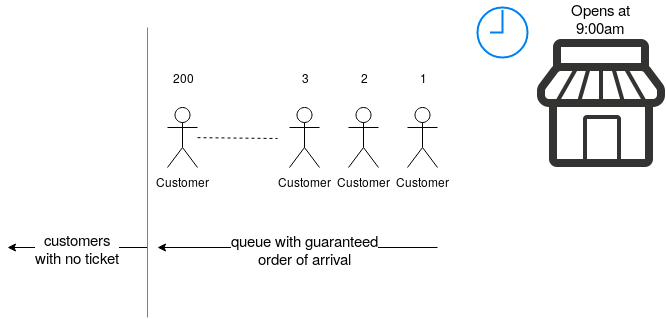Practicing the temporal order of a ticket system.
The kata is meant to be done in 3 or more consecutive sessions.
Analysis phase. We will use different techniques to find the essential domain complexity and draw the different bounded contexts.
The created artifacts are used for the next sessions. They can be changed in any moment when necessary.
Start implementing the actual application behavior.
Verification that the constrains on a real environment are met.
- Java 11
- Gradle
- JUnit 5
- Spring Boot 2
- Docker & Docker Compose
- Test Containers if needed
- Test-Driven Development
- Continuous Integration
- Outside-In or Inside-out strategies
For Domain analysis and discovery, we might practice:
We are working in a famous old museum, which attracts a lot of tourists each day. The demand is high and few space available compared.
The stakeholders want to create a ticket system that matches the current way the museum has to sell tickets as a value proposition, in order to attend you can only buy a ticket the same day. Instead of selling the tickets upfront, we want to sell the tickets for the same day starting at 9:00 local time online.
Since the demand is high and the space available reduced, the stakeholders asked to emulate how selling the ticket happens in the real world with the online shop, with a virtual queue which guarantees the order of arrival.
ℹ️ You can use the domain storytelling online tool with the file used to generate the diagram.
- See available tickets
- Queue number
- Buy ticket
- Ticket
